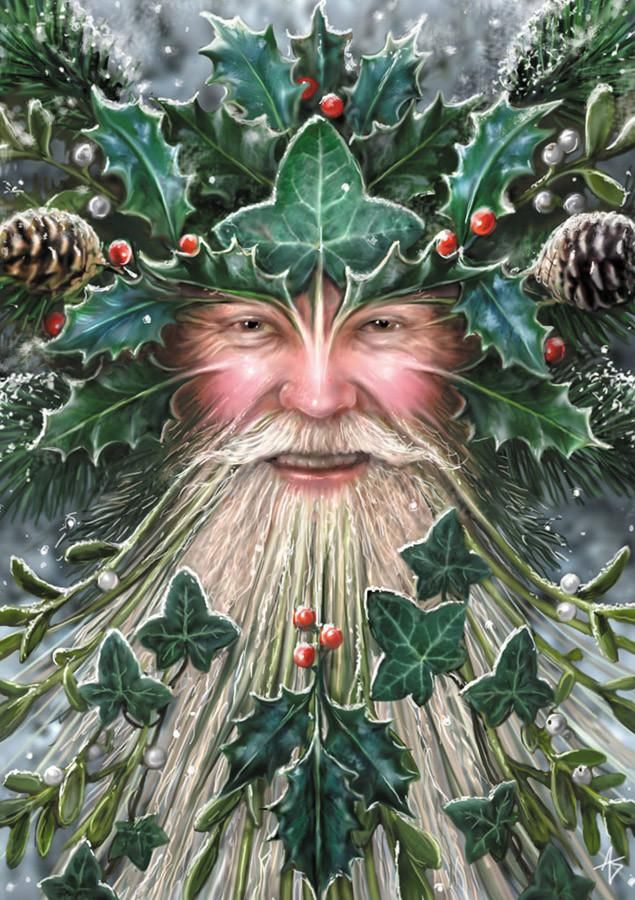FRIGG

Queen of the Aesir and Queen of Asgard, Frigg is the most important – yet misunderstood – goddess of the Norse pantheon.
Frigg, whose name means “beloved” is a goddess of fertility, family, motherhood, and love. She is both a maternal figure and a ruler, fulfilling immediate familial roles of wife (to Odin) and mother (to Baldr), as well as extended roles as queen, sky goddess, and goddess of the moon. The goddess of matrons, wives, and women generally, Frigg epitomizes the vast powers of womanhood as the matriarch in Cancer.
As queen, Frigg is the only other deity, besides Odin, to sit the throne in the high tower (Hliðskjálf), from where the entire cosmos (the nine worlds of Norse mythology) is overseen and managed. However, Frigg’s home is Fensalir – meaning “marsh hall” or “hall of the marshlands” – often described as her “palace of mists” (suspiciously similar to Avalon). Both marshes and mists are examples of borderlands where water meets earth and air, respectively. Frigg’s association with these borderland energies speaks to her home in Cancer, as the crab is a border creature. Where Pisces swims the oceans and Scorpio plunges the depths, Cancer lives on the shores, straddling the realms. With her connection to the moon and her ability to see beyond the veil, Frigg is linked with prophecy – said to see the future yet unable to change it – never revealing what she knows.
Unfortunately, primary source information regarding Frigg is extremely thin, leaving a lot of space for confusion and error. Perhaps because of the power she represents, there appears to be reluctance in allowing Frigg’s true might and meaning to stand on its own.
Frigg/Freya
To start with, we have the continuing debate over the autonomy of Frigg and Freya. Some scholarship suggests that these two goddesses are in fact the same (evolving from an earlier Germanic goddess, Frija). However, I find the conflation problematic when both goddesses sometimes appear in the same text. Furthermore, Frigg’s worship is more prevalent. She appears under different names in a variety of Germanic regions, whereas Freya’s worship seems to be concentrated in Nordic countries. There is definitely some overlap in the domains of Frigg and Freya, but trying to understand and work with them as a single entity is disrespectful to them and ineffectual for us.
Freya post coming soon
Midsummer/Midwinter
Another misunderstanding comes with Frigg’s correlation to winter goddesses, such as Frau Holle. These associations may have started based on erroneous linguistic evidence from Latin translations, but they are fueled by contemporary bias and ignorance.
As mentioned, Frigg’s mythology is very limited. Her best known myth involves her son Baldr, god of light and summer. Here is the gist of the story:
With her gift of prophecy, Frigg foresaw the death of Baldr. (In some narratives, Baldr dreamed of his own danger). Upset by the news, Frigg travelled the worlds extracting oaths from all created things that none should harm her son… all except mistletoe (which was either missed or deemed too small to be a threat). Because he was invincible, the gods amused themselves by throwing all sorts of stuff at Baldr, continually amazed that he remained unharmed. However, Loki (trickster god) discovered the mistletoe loophole and convinced Hodur – god of winter and Baldr’s blind twin – to throw the mistletoe at his brother. Baldr was killed and Ragnarok (the twilight of the gods) began.
Of course, this story speaks very nicely to the Oak King/Holly King sun god mythology. Baldr represents the Oak King (sun born at Yule and defeated at Litha) and Hodur represents the Holly King (Shadow of the sun). However, stating that the yuletide celebration Mother’s Night (Modraniht) is in honour of Frigg’s birthing Baldr speaks more to a modern neopagan interpretation than the truth.
Contemporary celebrations and correspondences often miss nuances and have consequently mistakenly tied Frigg with midwinter. Weaving, fate, and weather are commonly associated with winter, Yule, and earthly Capricorn energies. However, it is very clear that Frigg’s element is water. Her house is watery and her planet is the moon. She is thought to weave the clouds (a watery sky feature) but this is done to facilitate fertility, and the clouds are said to indicate her mood (another watery domain). Frigg’s connection to fate is not through its creation but its knowledge (prophecy). Finally, her association with domesticity is focused on the watery, emotional aspects (Cancer) as opposed to the earthly, industrial aspects (Capricorn).
As an incarnation of the Great Goddess, Frigg oversees the solstice axis (she is the mother of both summer and winter) but the roots of her power are in Cancer, at the midsummer solstice.
Frigg is the matriach who births the light and accepts it back at the turning of the wheel. She is the beloved goddess of fertility, motherhood, love, prophecy…and the powerful force that is womanhood. Hail Frigg!
As a side note:
The death of the summer sun, Baldr, at the hands of winter’s mistletoe is an interesting addition to the general solar mythology. While mistletoe is revered in Celtic traditions because of its evergreen status, it is important to note that it is a parasite, feeding from its host tree and potentially killing it. In the death of Baldr, the mistletoe serves as a lesson against arrogance (a sun/ego trait) and a recognition too much of anything – including “light” is problematic. Balance is the key to healthy cycles.
